J-STORIES - Although around 44 million people around the world are blind now, but more than half of these cases are caused by preventable and treatable diseases such as cataracts, and it is said that blindness can be prevented if treated at the right time. However, in developing countries and other areas without electricity, it has been impossible to provide medical care that leads to appropriate prevention and early treatment.
Now a medical device that can test for cataracts and other eye diseases simply by being attached to a smartphone is expanding its market in developing countries and underpopulated regions.
According to Oui Inc., the Tokyo-based startup that developed the device, is planning a new medical screening project to check the eyes of newborns in Indonesia in cooperation with local medical institutions.
The company’s Smart Eye Camera (SEC) is an ophthalmic device that uses a smartphone’s camera and light. Attached to the phone, it can easily diagnose ophthalmic diseases such as cataracts and is certified as a medical device that can complement the slit-lamp microscope typically used for detailed examinations. It can be bought at one tenth the price of the microscope and is small enough to be easily carried in a pocket.
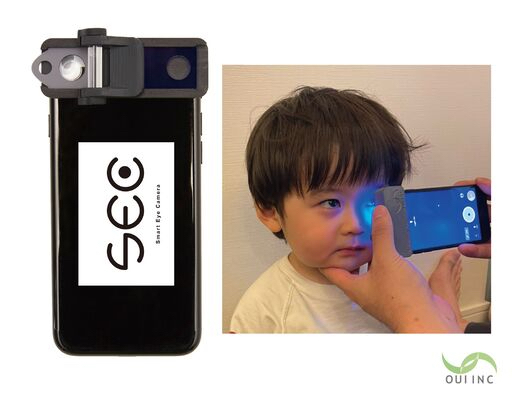
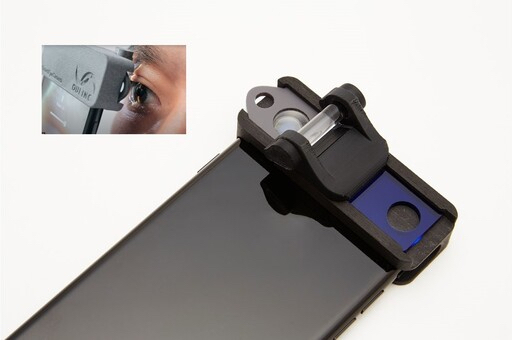
Oui is a university-launched venture company started by ophthalmologists at Keio University School of Medicine. Dr. Eisuke Shimizu, the company’s founder and an ophthalmologist himself, had been helping with cataract surgeries in rural areas of Vietnam as a volunteer with the NPO called Fight For Vision (FFV). But there were no ophthalmology specialists, and there wasn't enough medical equipment. He came up with the idea for SEC after seeing local staff trying to examine a patient’s eye using the light from a smartphone.
SECs are used by medical institutions on remote islands and in underpopulated areas, to provide remote medical care by connecting local doctors with ophthalmologists on the mainland and elsewhere. Through this system, over 100 SECs are being used overseas in 20 countries, such as in Africa and Southeast Asia.
Currently, 43 million people are living with blindness across the globe, and this figure is expected to increase to 120 million by 2050. The goal of the company is to “halve global blindness by 2025” using SEC.
It is now developing an artificial intelligence (AI) that can analyze the image data collected by SEC and assist diagnoses, and is working to complete this next year. Once this AI is installed, it will be possible for non-ophthalmologists, such as internal medicine doctors, to make diagnoses, making it more likely that eye disease can be detected.
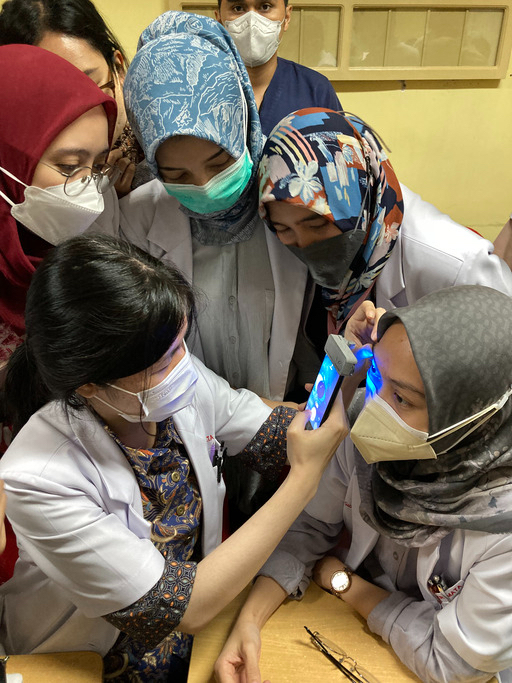
Dr. Shimizu told J-Stories about the company’s future goals: “I hope we can use eye data (collected by SEC) to find not just eye diseases but also systemic diseases. We want to improve health care for many people from eyes.”
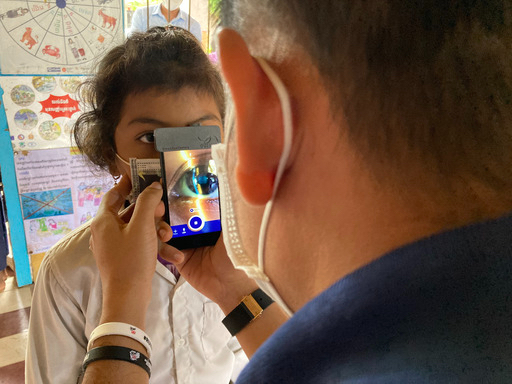
The company has conducted various pilot demonstrations in cooperation with local ophthalmologists, NGOs, medical institutions, and international organizations in more than 30 countries around the world, including Asia, Africa, and Latin American regions. The smart eye camera was registered as a medical device in Japan in 2019, Europe and Kenya in 2021, and Cambodia and Indonesia this year.
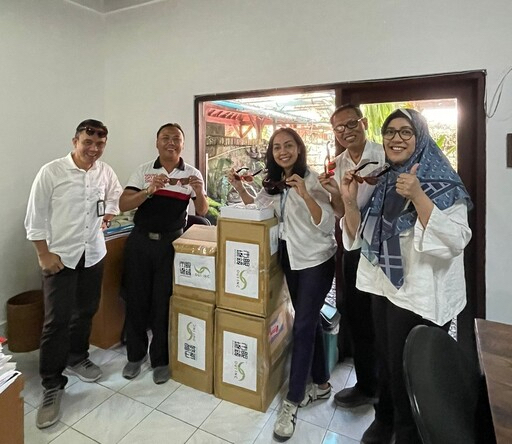
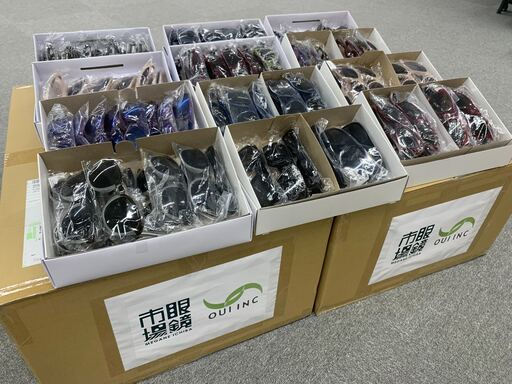
In addition, in April 2023, in collaboration with Megane Top Co., Ltd. which operates "Megane Ichiba", they donated 826 pairs of sunglasses and eyeglass frames to the John Fawcett Foundation/ Udayana University based in Bali, Indonesia. In May, Visionary Holdings Ltd., which operates "Megane Super" nationwide, also donated optical tables and other optical equipment and instruments to ECWA EYE HOSPITAL in Kano, northern Nigeria in May.
Translation and Editing by Tony McNicol and Toshi Maeda
Top page photo by OUI INC.
For inquires about this article, please contact us at jstories@pacificbridge.jp
***
Click here for the Japanese version of the article.
![[Podcast] Japanese technology to supercharge human fertility (Part 3)](https://storage.googleapis.com/jstories-cms.appspot.com/images/1766558713084place-for-scientific-research-2025-03-07-14-08-49-utc%20(1)_smallthumbnail.jpeg)
![[Podcast] Japanese technology to supercharge human fertility (Part 2)](https://storage.googleapis.com/jstories-cms.appspot.com/images/1765863548035unnamed-7_smallthumbnail.jpg)
![[Podcast] Japanese technology to supercharge human fertility (Part 1)](https://storage.googleapis.com/jstories-cms.appspot.com/images/1765440905082unnamed_smallthumbnail.jpg)

![[Podcast] Japanese technology to supercharge human fertility (Part 3)](https://storage.googleapis.com/jstories-cms.appspot.com/images/1766558713084place-for-scientific-research-2025-03-07-14-08-49-utc%20(1)_bigthumbnail.jpeg)
![[Interview: Part 2] A digital approach to tackle child hunger in Japan with dignity](https://storage.googleapis.com/jstories-cms.appspot.com/images/1766130666509unnamed_bigthumbnail.jpg)
![[Podcast] Japanese technology to supercharge human fertility (Part 2)](https://storage.googleapis.com/jstories-cms.appspot.com/images/1765863548035unnamed-7_bigthumbnail.jpg)
![[Podcast] Japanese technology to supercharge human fertility (Part 1)](https://storage.googleapis.com/jstories-cms.appspot.com/images/1765440905082unnamed_bigthumbnail.jpg)
_bigthumbnail.jpeg)





![[Interview] When digital and physical worlds meet](https://storage.googleapis.com/jstories-cms.appspot.com/images/1747974430456unnamed-2_smallthumbnail.png)




_smallthumbnail.jpeg)
![[Interview: Part 1] From nourishing souls to feeding the hungry](https://storage.googleapis.com/jstories-cms.appspot.com/images/1763695595492unnamed_smallthumbnail.jpg)

